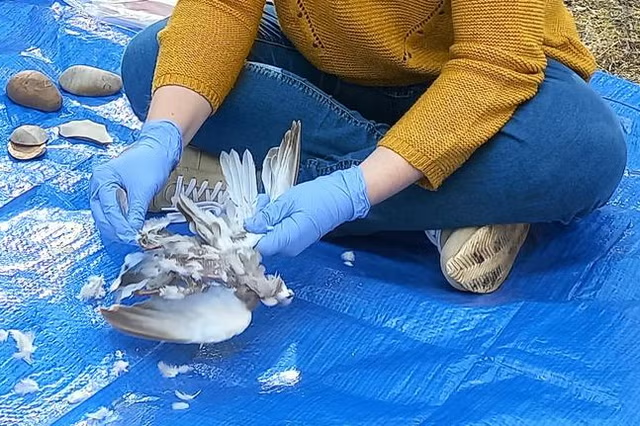Bird flu has made a concerning leap from birds to dairy cattle across multiple U.S. states, marking the onset of mammal-to-mammal transmission.
This development has seen the virus spreading between cows and even jumping to other animals, including cats and a raccoon, according to a new study.
Diego Diel, study author and associate professor of virology at Cornell University, stated that while whole genome sequencing did not reveal any mutations making bird flu more transmissible to humans, the data is concerning as it suggests the virus may be adapting in mammals.
"The concern is that potential mutations could arise that could lead adaptation to mammals, spillover into humans and potential efficient transmission in humans in the future," he said in a statement.
Therefore, it is critical to continue to monitor the virus in affected animals and also in any potential infected humans, Diel added.
So far, 11 human cases of bird flu have been reported in the U.S., with the first case dating back to April 2022. Each case presented mild symptoms: four were linked to cattle farms and seven to poultry farms, including an outbreak of four cases in Colorado in the past few weeks.
The recent patients fell ill with the same strain identified in the study as circulating in dairy cows, leading researchers to suspect that the virus likely originated from dairy farms in the same county.
Bird flu infections were first detected in January 2022 and have since led to the deaths of over 100 million domestic birds and thousands of wild birds in the U.S.
The virus can be detected in dairy cattle herds, likely infected by wild birds, through symptoms such as reduced appetite, changes in feral consistency, respiratory distress, and a significant drop in milk production.
The U.S. Department of Agriculture has funded bird flu testing programs at no cost to producers. According to Diel, early testing, strengthened biosecurity measures, and quarantines in the event of positive results are essential to containing further spread of the virus.
The researchers determined that the cow-to-cow transmission occurred when infected cows from Texas were moved to a farm with healthy cows in Ohio.
In addition, the cats and raccoon likely fell ill from drinking raw milk from infected cows, while the wild birds may have contracted the virus through environmental contamination or aerosols stirred up during milking or cleaning operations.
The study, funded by the AHDC, the Ohio Animal Disease and Diagnostic Laboratory, the Texas A&M Veterinary Medical Diagnostic Laboratory and the USDA, was published in Nature.
Is there a health problem that's worrying you? Do you have a question about bird flu? Let us know via health@newsweek.com. We can ask experts for advice, and your story could be featured in Newsweek.
Disclaimer: The copyright of this article belongs to the original author. Reposting this article is solely for the purpose of information dissemination and does not constitute any investment advice. If there is any infringement, please contact us immediately. We will make corrections or deletions as necessary. Thank you.



